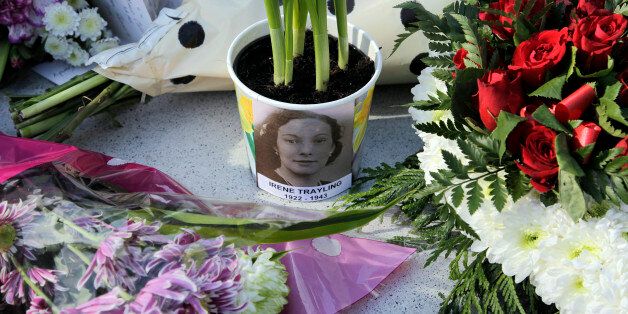
The German bombardment of London in World War Two visited death and injury to thousands of Londoners, especially in the East End. One terrible incident stands out from the litany of carnage.
On the night of 3 March 1943, after almost three years of night bombing, the air-raid sirens sounded over Bethnal Green. War-weary Londoners made their way to underground shelters, including the newly-built Bethnal Green underground station. Bethnal Green tube had only been constructed a few years before war broke out, and the track had yet to be laid. During the Blitz it was the nightly home to over three thousand East Enders, laying on the platform, or bunk beds. After a night of noise in the cramped, airless shelters, the East End got up each morning, cleared away the rubble, and went to work.
An unusual sound, like a new type of bomb exploding, created a crush to get down the stairs of the station. At the bottom of the station steps, a woman and her baby tumbled to the ground, and were crushed to death. Behind them, scores of others, mostly women and children piled on top of each other in the dark. Within a matter of minutes 173 people were dead.
This stands as the largest loss of civilian life in a single incident in London in WW2. But the tragedy was compounded when the facts emerged from the cloak of war-time secrecy and cover-up. The unusual sound which caused the crowds to hurry down the stairs was an anti-aircraft battery in Victoria Park, trying out a new design of anti-aircraft gun. Despite the sound of the sirens, there were no German planes over Bethnal Green that night, nor was one single bomb dropped.
Campaigners have uncovered documents which show that Bethnal Green council repeatedly asked for a handrail to be installed, and for the steps to be painted white, but ministers refused. During the dark days of war, the incident was reported as the result of a bomb blast. Local people were told to keep their mouths firmly shut, even when journalists offered to pay them for their eye-witness accounts. Civilian morale would have been shattered if the facts had been known, and the Nazis would have been handed a propaganda coup.
Now, 74 years later, it is right that we continue to unearth the truth, and commemorate the dead. On 5 March I will take part in a memorial service at St John Church, Cambridge Heath Road to remember the victims, and the survivors, of the tragedy. During the service, we shall recall some of the names of the victims: Iris and Joan Clatworthy, aged eight and nine; Elizabeth Fletcher, aged 28, and her son Alexander aged just three; Flo and Tommy Letchmere, both 66; Dorothy Smith, aged 12 years old. The list is long, and impossible to read without a tear in your eye. Reading through the list, you come across East End family names that you can still hear in our community today: Ellam, Fletcher, Harris, Smith, Spicer, Taylor and Trotter.
The Stairway to Heaven Memorial has kept the story of the Bethnal Green tube disaster alive. Through its campaigning and fundraising, we have been made aware of the tragedy, and marked it each with the reverence it deserves. Soon, a permanent memorial will be unveiled at Bethnal Green Gardens, to remember the 173 East Enders who lost their lives on that terrible night.
Rushanara Ali is the Labour MP for Bethnal Green and Bow
